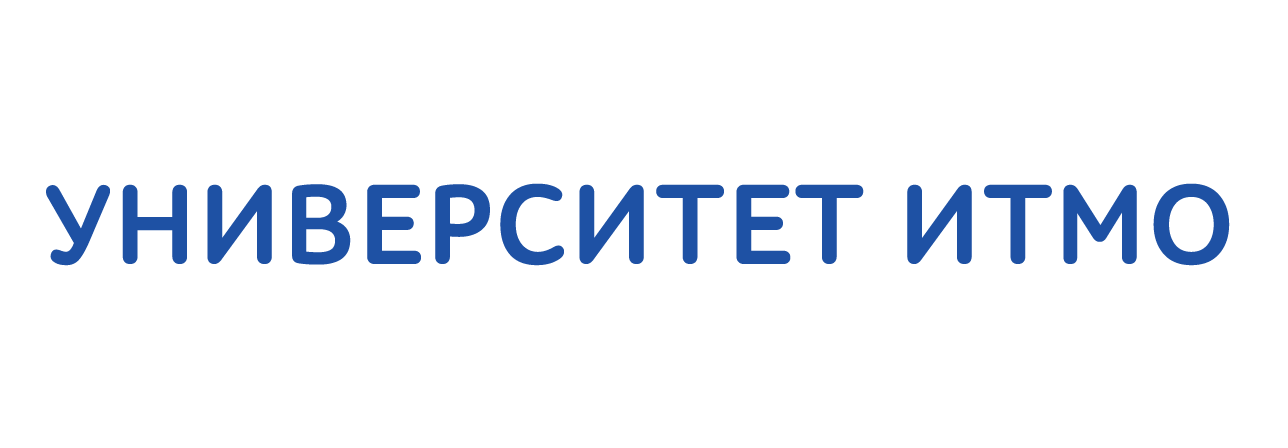Меню
Публикации
2025
2024
2023
2022
2021
2020
2019
2018
2017
2016
2015
2014
2013
2012
2011
2010
2009
2008
2007
2006
2005
2004
2003
2002
2001
Главный редактор

НИКИФОРОВ
Владимир Олегович
д.т.н., профессор
Партнеры
УДК 612.84 004.9 004.946
Форман Н., Коралло Л.
Читать статью полностью
ПРОШЛОЕ И БУДУЩЕЕ 3-D ТЕХНОЛОГИЙ ВИРТУАЛЬНОЙ РЕАЛЬНОСТИ
Читать статью полностью
Язык статьи - Английский
Аннотация
Аннотация
Виртуальная реальность (метод виртуальной среды, VET) широко используется на протяжении двадцати лет. За этот период стали очевидными преимущества использования технологий виртуальной окружающей среды во многих областях, включая оценку рисков и обучение, образование, реабилитацию и психологические исследования познавательной способности в пространстве. Гибкость, воспроизводимость и адаптируемость методов виртуальной среды особенно важны при тренировке способности операторов к ориентации на местности. Однако, к сожалению, использование оператором пространственной информации от входных устройств виртуальной реальности приводит к неизменному преуменьшению оценки расстояния до наблюдаемых объектов. В данной работе выполнен обзор эволюции технологий создания виртуальной среды и прогнозирования вероятных сфер их применения. Подчеркиваются перспективные направления оптимизации использования человеком новых технологий.
Ключевые слова: технологии виртуальной реальности, применение 3D технологий, преимущества и недостатки виртуальной среды, эволюция 3D технологий
Благодарности. Работа выполнена при поддержке Российского научного фонда, грант РНФ 14-15-00918, «Технологии оптимизации и восстановления когнитивных функций человека виртуальной средой». Авторы выражают благодарность за интересные и содержательные обсуждения вопросов, касающихся виртуальной реальности и пространственных когнитивных способностей, коллегам и друзьям из Университета ИТМО, Санкт-Петербург, факультета психологии СПбГУ и Института физиологии имени И.П. Павлова РАН, особенно профессору Юрию Евгеньевичу Шелепину, а также Президенту Российско-Казахского университета Темирхану Байбосуновичу Бердимуратову, доктору Данне Наурзалиной, заведующей кафедрой психологии Гульфие Муратовне Яппаровой и членам регионального отдела образования г. Актобе.
Список литературы
Благодарности. Работа выполнена при поддержке Российского научного фонда, грант РНФ 14-15-00918, «Технологии оптимизации и восстановления когнитивных функций человека виртуальной средой». Авторы выражают благодарность за интересные и содержательные обсуждения вопросов, касающихся виртуальной реальности и пространственных когнитивных способностей, коллегам и друзьям из Университета ИТМО, Санкт-Петербург, факультета психологии СПбГУ и Института физиологии имени И.П. Павлова РАН, особенно профессору Юрию Евгеньевичу Шелепину, а также Президенту Российско-Казахского университета Темирхану Байбосуновичу Бердимуратову, доктору Данне Наурзалиной, заведующей кафедрой психологии Гульфие Муратовне Яппаровой и членам регионального отдела образования г. Актобе.
Список литературы
1. Rose F.D., Foreman N.P. Virtual reality. Psychologist, 1999, vol. 12, no. 11, pp. 550–554.
2. Foreman N., Stanton D., Wilson P., Duffy H. Spatial knowledge of a real school environment acquired from virtual or physical models by able-bodied children and children with physical disabilities. Journal of Experimental Psychology: Applied, 2003, vol. 9, no. 2, pp. 67–74. doi: 10.1037/1076-898X.9.2.67
3. Handbook of Spatial Research Paradigms and Methodologies. Volume 1: Spatial Cognition in Child and Adult. Eds. N.P. Foreman, R. Gillett. East Sussex: Psychology Press, 1997.
4. Handbook of Spatial Research Paradigms and Methodologies. Volume 2: Clinical and Comparative Studies. Eds. N.P. Foreman, R. Gillett. East Sussex: Psychology Press, 1998. 278 p.
5. Taillaude M., Sauzeon H., Arvind Pala P., Dejos M., Larrue F., Gross C., N’Kaoua B. Age-related wayfinding differences in real large-scale environments: detrimental motor control effects during spatial learning are mediated by executive decline? PLOS ONE, 2013, vol. 8, no. 7, art. e67193. doi: 10.1371/journal.pone.0067193
6. Sandamas G., Foreman N. Spatial reconstruction following virtual exploration in children aged 5-9 years: effects of age, gender and activity-passivity. Journal of Environmental Psychology, 2007, vol. 27, no. 2, pp. 126–134. doi: 10.1016/j.jenvp.2007.03.001
7. Potegal M., Day M.J., Abraham L. Maze orientation, visual and vestibular cues in two-maze spontaneous alternation of rats. Physiological Psychology, 1977, vol. 5, no. 4, pp. 414–420.
8. Foreman N.P., Stanton-Fraser D.E., Wilson P.N., Duffy H., Parnell R. Transfer of spatial knowledge to a two-level shopping mall in older people, following virtual exploration. Environment and Behavior, 2005, vol. 37, no. 2, pp. 275–292. doi: 10.1177/0013916504269649
9. Wilson P.N., Foreman N.P., Tlauka M. Transfer of spatial information from a virtual to a real environment in physically disabled children. Disability and Rehabilitation, 1996, vol. 18, no. 12, pp. 633–637.
10.Wilson P.N., Foreman N.P., Tlauka M. Transfer of spatial information from a virtual to a real environment. Human Factors, 1997, vol. 39, no. 4, pp. 526–531.
11.Wilson P.N., Foreman N., Gillett R., Stanton D. Active versus passive processing of spatial information in a computer-simulated environment. Ecological Psychology, 1997, vol. 9, no. 3, pp. 207–222.
12.O’Keefe J., Nadel L. The Hippocampus as a Cognitive Map. Oxford University Press, 1978.
13.Tolman E.C. Cognitive maps in rats and men. Psychological Review, 1948, vol. 55, no. 4, pp. 189–208. doi: 10.1037/h0061626
14.Tolman E.C., Ritchie B.F., Kalish D. Studies in spatial learning I. Orientation and the short-cut. Journal of Experimental Psychology, 1946, vol. 36, no. 1, pp. 13–24. doi: 10.1037/h0053944
15.Foreman N.P. Spatial cognition and its facilitation in special populations. In: Applied Spatial Cognition: From Research to Cognitive Technology. Ed. G. Allen. Mahwah, NJ: Lawrence Erlbaum, 2006, pp. 129–178.
16.McComas J., Pivik J., Laflamme M. Children's transfer of spatial learning from virtual reality to real environments. Cyberpsychology and Behavior, 1998, vol. 1, no. 2, pp. 121–128.
17.Maguire E.A., Frackiowiak R.S.J., Frith C.D. Recalling routes around London: activation of the right hippocampus in taxi drivers. Journal of Neuroscience, 1997, vol. 17, no. 18, pp. 7103–7110.
18.Gibson J.J. The Ecological Approach to Visual Perception. Boston: Houghton Mifflin, 1979, 332 p.
19.Gron G., Wunderlich A.P., Spitzer M., Tomczak R., Riepe M.W. Brain activation during human navigation: gender-different neural networks as substrate of performance. Nature Neuroscience, 2000, vol. 3, no. 4, pp. 404–408. doi: 10.1038/73980
20.Hoffman H. G., Richards T., Coda B., Richards A., Sharar S.R. The illusion of presence in immersive virtual reality during an fMRI brain scan. Cyberpsychology and Behavior, 2003, vol. 6, no. 2, pp. 127–131.
21.Sandamas G., Foreman N., Coulson M. Interface familiarity restores active advantage in a virtual exploration and reconstruction task in children. Spatial Cognition and Computation, 2009, vol. 9, no. 2, pp. 96–108. doi: 10.1080/13875860802589202
22.Sandamas G., Foreman N.P. Spatial demands of concurrent tasks can compromise spatial learning of a virtual environment: Implications for active input control. Sage Open, 2014, vol. 4, no. 1. doi: 10.1177/2158244014525424
23.Sandamas G., Foreman N. Driver status and spatial acquisition from a virtual environment // Sage Open. 2014. (in press).
24.Stirk J.A., Foreman N. Assessment of visual-spatial deficits in patients with early Parkinson's disease and closed head injuries using virtual environments. Cyberpsychology and Behavior, 2005, vol. 8, no. 5, pp. 431–440. doi: 10.1089/cpb.2005.8.431
25.Foreman N.P., Gell M. Kids in space: handicapped children's spatial knowledge of their mainstream school environment. Special Children, 1990, no. 1.
26.Akhutina T., Foreman N., Krichevets A., Matikka L., Narhi V., Pylaeva N, Vahakuopus J. Improving spatial functioning in children with cerebral palsy using computerised and traditional game tasks. Disability and Rehabilitation, 2005, vol. 25, no. 24, pp. 1361–1371. doi: 10.1080/09638280310001616358
27.Brooks B.M., McNeil J.E., Rose F.D., Greenwood R.J., Attree E.A., Leadbetter A. G. Route learning in a cased of amnesia: a preliminary investigation into the efficacy of training in a virtual environment. Neuropsychological Rehabilitation, 1999, vol. 9, no. 1, pp. 63–76.
28.Harrison A., Derwent G., Enticknap A., Rose F.D., Attree E.A. The role of virtual reality technology in the assessment and training of inexperienced powered wheelchair users. Disability and Rehabilitation, 2002, vol. 24, no. 11-12, pp. 599–606. doi: 10.1080/09638280110111360
29.Bailey F., Moar M. The VERTEX project: designing and populating shared 3D virtual worlds in the primary (elementary) classroom. Computers and Graphics (Pergamon), 2003, vol. 27, no. 3, pp. 353–359. doi: 10.1016/S0097-8493(03)00030-X
30.Foreman N.P. Finding a place for virtual reality in special needs education. Themes in Education, 2000, vol. 1, pp. 391–408.
31.Foreman N., Boyd-Davis S., Moar M., Korallo L., Chappell E. Can virtual environments be used to enhance the learning of historical chronology? Instructional Science, 2008, vol. 36, no. 2, pp. 155–173. doi: 10.1007/s11251-007-9024-7
32.Foreman N., Korallo L., Newson D., Sarantos N. The incorporation of challenge enhances the learning of chronology from a virtual display. Journal of Virtual Reality, 2008, vol. 12, no. 2, pp. 107–113. doi: 10.1007/s10055-007-0078-2
33.Korallo L., Foreman N., Boyd-Davis S., Moar M., Coulson M. Do challenge, task experience and computer familiarity influence the learning of historical chronology from virtual environments in 8-9 year old children? Computers and Education, 2012, vol. 58, no. 3, pp. 1106–1116. doi: 10.1016/j.compedu.2011.12.011
34.Korallo L., Foreman N., Boyd-Davis S., Moar M., Coulson M. Can multiple “spatial” virtual timelines convey the relatedness of chronological knowledge across parallel domains? Computers and Education, 2012, vol. 58, no. 2, pp. 856–862. doi: 10.1016/j.compedu.2011.10.011
35.Dabbs Jr. J.M., Chang E.-L., Strong R.A., Milun R. Spatial ability, navigational strategy and geographic knowledge among men and women. Evolution and Human Behavior, 1998, vol. 19, no. 2, pp. 89–98.
36.Robillard G., Bouchard S., Fournier T., Renaud P. Anxiety and presence during VR immersion: a comparative study of the reactions of phobic and non-phobic participants in therapeutic virtual environments derived from computer games. Cyberpsychology and Behavior, 2003, vol. 6, no. 5, pp. 467–476. doi: 10.1089/109493103769710497
37.Schoenfeld R., Foreman, N.P., Leplow B. Ageing and spatial reversal learning in humans: findings from a virtual water maze. Behavioural Brain Research, 2014, vol. 270, pp. 47–55. doi: 10.1016/j.bbr.2014.04.036
38.Foreman N.P., Stirk J., Pohl J., Mandelkow L., Lehnung M., Herzog A., Leplow B. Spatial information transfer from virtual to real versions of the Kiel locomotor maze. Behavioral Brain Research, 2000, vol. 112, no. 1-2, pp. 53–61.
39.Schoenfeld R. A comparison of the performance of animals on the Water Maze and humans on a virtual version. (paper in preparation).
40.Thomson J.A., Tolmie A.K., Foot H.C., Whelan K.M., Sarvary P., Morrison S. Influence of virtual reality training on the roadside crossing judgments of child pedestrians. Journal of Experimental Psychology: Applied, 2005, vol. 11, no. 3, pp. 175–186. doi: 10.1037/1076-898X.11.3.175
41.Clancy T.A., Rucklidge J.J., Owen D. Road crossing safety in virtual reality: a comparison of adolescents with and without ADHD. Journal of Clinical Child and Adolescent Psychology, 2006, vol. 35, no. 2, pp. 203–215. doi: 10.1207/s15374424jccp3502_4
42.Darken R.P., Silbert J.L. Navigating large virtual spaces. Plastics, Rubber and Composites Processing and Applications, 1996, vol. 8, no. 1, pp. 49–71.
43.Tlauka M., Brolese A., Pomeroy D., Hobbs W. Gender differences in spatial knowledge acquired through simulated exploration of a virtual shopping centre. Journal of Environmental Psychology, 2005, vol. 25, no. 1, pp. 111–118. doi: 10.1016/j.jenvp.2004.12.002
44.Waller D.I. Individual differences in spatial learning from computer-simulated environments. Journal of Experimental Psychology: Applied, 2000, vol. 6, no. 4, pp. 307–321.
45.Foreman N.P., Sandamas G., Newson D. Distance underestimation in virtual space is sensitive to gender but not activity-passivity or mode of interaction. Cyberpsychology and Behavior, 2004, vol. 7, no. 4, pp. 451–457. doi: 10.1089/cpb.2004.7.451
46.Lampton D.R., Clark B.R., Knerr B.W. Urban combat: the ultimate extreme environment. Journal of Society for Human Performance in Extreme Environments, 2003, vol. 7, pp. 57–62.
47.Gallagher A.G., Ritter E.M., Champion H., Higgins G., Fried M.P., Moses G., Smith C.D, Satava R.M. Virtual reality simulation for the operating room: proficiency-based training as a paradigm shift in surgical skills training. Annals of Surgery, 2005, vol. 241, no. 2, pp. 364–372. doi: 10.1097/01.sla.0000151982.85062.80
48.Riva G. Virtual reality in neuroscience: a survey. Studies in Health Technology and Informatics, 1998, vol. 58, pp. 191–199. doi: 10.3233/978-1-60750-902-8-191
49.Riva G., Gaggioli A., Villani D., Preziosa A., Morganti F., Corsi R., Faletti G.,Vezzadini L. NeuroVR: an open-source virtual reality tool for research and therapy. Proc. 15th Annual Medicine Meets Virtual Reality Conference. Long Beach, California, 2007.
50.Rizzo A.A., Schultheis M.T. Expanding the boundaries of psychology: the application of virtual reality. Psychological Enquiry, 2002, vol. 13, no. 2, pp. 134–140.
51.Wiederhold B.K., Wiederhold M.D. Lessons learned from 600 virtual reality sessions. Cyberpsychology and Behavior, 2000, vol. 3, no. 3, pp. 393–400. doi: 10.1089/10949310050078841
52.Wiederhold B.K., Wiederhold M.D. Virtual Reality Therapy for Anxiety Disorders: Advances in Evaluation and Treatment. US: American Psychological Association, 2005, 225 p.
53.Cardenas G., Munoz S., Gonzalez M., Uribarren G. Virtual reality applications to agoraphobia: a protocol. Cyberpsychology and Behavior, 2006, vol. 9, no. 2, pp. 248–250. doi: 10.1089/cpb.2006.9.248
54.Gershon J., Anderson P., Graap K., Zimand E., Hodges L., Rothbaum B.O. Virtual reality exposure therapy in the treatment of anxiety disorders. The Scientific Review of Mental Health Practice, 2004, vol. 1, pp. 76–81.
55.Plante T.G., Cage C., Clements S., Stover A. Psychological benefits of exercise paired with virtual reality: outdoor exercise energizes whereas indoor virtual exercise relaxes. International Journal of Stress Management, 2006, vol. 13, pp. 108–117. doi: 10.1037/1072-5245.13.1.108

















